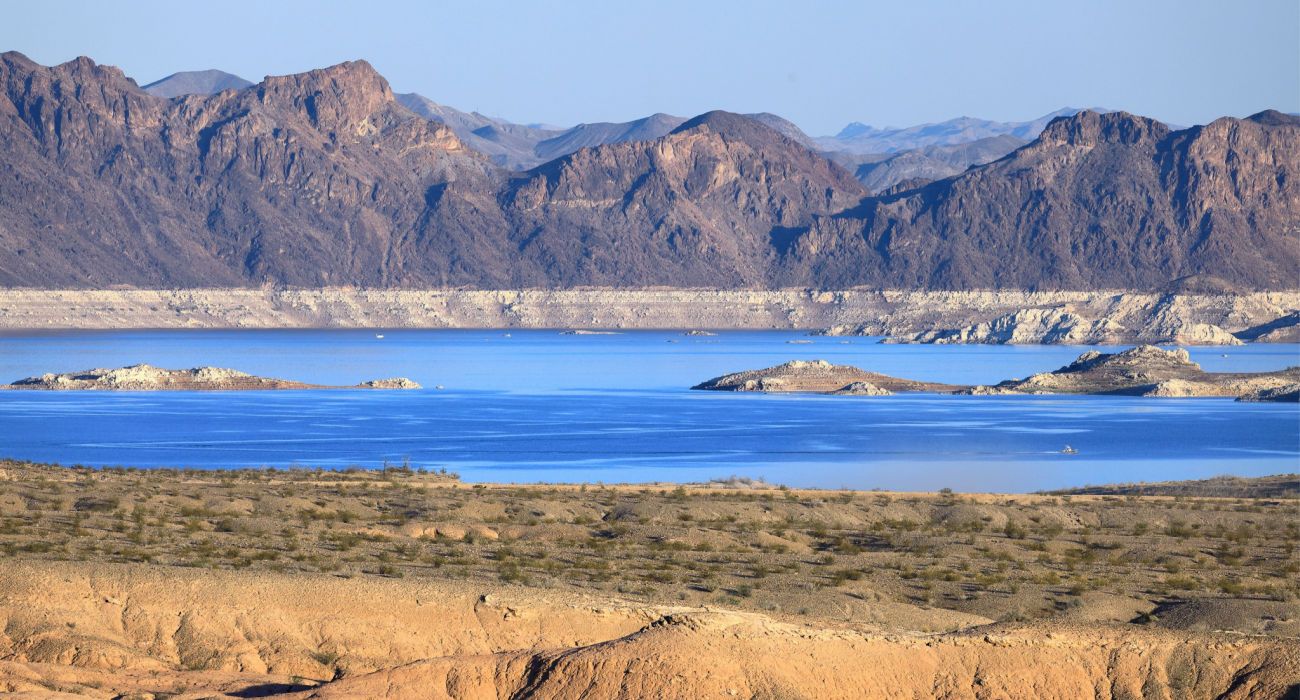Quick Links
Some countries have their "lost cities" (like Peru has the lost Inca capital of Vilcabamba hidden in the Andean jungle), but Nevada has The Lost City Museum. The remarkable museum is located in Overton, close to Las Vegas - it is one of the many great attractions within easy reach of Sin City. The "Lost City" is an ancient Ancestral Pueblo settlement, and one can go and visit the museum built to preserve its heritage.
The Lost City Museum is a veritable stone's throw from Valley of Fire State Park. It is a part that offers one of the finest options for a day trip from Las Vegas. The Valley of Fire State Park is the largest and oldest state park in Nevada. While Las Vegas is one of the youngest American cities (founded in 1905), it is in the company of prehistoric cities.
The Original Lost City Is Lost Under Lake Mead
The Lost City Museum was previously known as the Boulder Dam Park Museum and is located on an authentic prehistoric site of the Ancestral Puebloans. It was built in 1935 by the Civilian Conservation Corps to exhibit artifacts from the Pueblo Grande de Nevada archeological site that was to be submerged by Lake Mead.
- Built: In 1935
- Original Site: Settled In 300 AD
The Pueblo Grande de Nevada is known as "Nevada's "Lost City." It was founded by Basketmaker people around 300 AD and may have had past occupations on the site since as early as 8,000 BC. Some of the houses that have been found at the site once had up to 20 rooms (the largest had 100 rooms).
Excavations of the original site were carried out on and off between 1924 and 1938. Today most of the more developed parts of the pueblo site are now partially submerged under Lake Mead's Overton arm.
Why The Lost City Museum Is Worth Visiting
While the museum is not the actual "Lost City," it is still an actual prehistoric Pueblo site. In the mid-1950s, the National Park Service turned the operation of the museum over to the state of Nevada, which manages it today.
Exhibits At The Lost City Museum:
- Pottery
- Shell
- Jewelry
- Pictures Of A Excavated Pithouse
- Reconstructed Pueblo Houses
The Lost City Museum was extended in 1981, and some ruins were incorporated to protect them so that the public could see them. It now has three exhibition galleries, a small screening room, a museum store, outdoor exhibits (like a Native American pit house and some reconstructed pueblos), and a research library.
The Lost City Museum is a place where visitors can learn about the history of Ancestral Puebloans, who called this part of Nevada home between AD 200 and AD 1200.
It is now listed on the National Register of Historic Places.
While the Hoover Dam was one of the greatest American feats of engineering of the first half of the 20th century, it did flood an area that was chock-full of priceless ancient artifacts. It drowned archeological sites from prehistory, and so efforts were taken to preserve what could be.
Visiting The Lost City Museum Today
The Lost City Museum is a place where one can learn about the history of the region from as back as 8,000 BC. It is a place where visitors can get up close and personal with ancient Nevada history and Pueblo artifacts and ruins.
- Opening Hours: 8.30 am to 4.30 pm
- Days Open: Wednesday to Sunday
- Closed: Monday, Tuesday (and Thanksgiving, Christmas, and New Year's Day)
The Lost City Museum is around 70 miles out of Las Vegas and close to the Lake Mead National Recreation Area and the Valley of Fire State Park. The museum is open Wednesday through Sunday and should be visited by anyone going to the Valley of Fire.
- Admission: $6.00 For Adults (Children Under 17 Are Free)
The museum offers tours of the museum and grounds on request. The tours last around an hour (depending on the weather). To schedule a tour and learn more information about the tours, contact the museum at (702) 397-2193 or Jesse Davie at rdavie@nevadaculture.org. They also cater to school groups.
Plan ahead and plan one's visit around one of the events that the museum offers.

